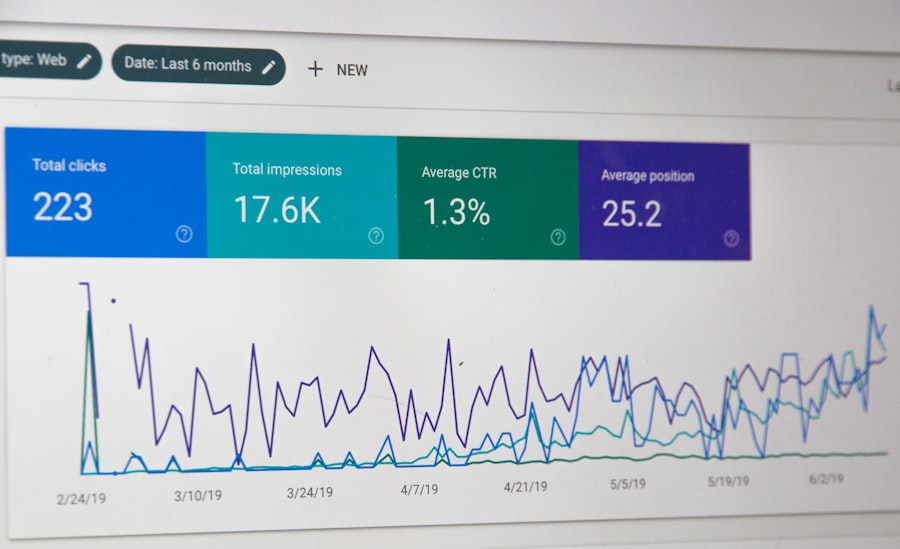Search Engine Optimization (SEO) marketing is a multifaceted approach aimed at enhancing a website’s visibility on search engines like Google, Bing, and Yahoo. The primary goal of SEO is to attract organic traffic, which refers to visitors who arrive at a website through unpaid search results. This process involves a combination of technical and creative elements, including keyword research, content creation, and link building.
By optimizing various aspects of a website, businesses can improve their rankings on search engine results pages (SERPs), thereby increasing their chances of reaching potential customers. At its core, SEO marketing is about understanding how search engines work and what users are searching for. Search engines utilize complex algorithms to determine the relevance and authority of web pages in relation to specific queries.
These algorithms consider numerous factors, including the quality of content, the structure of the website, and the number of inbound links. As such, effective SEO requires a comprehensive understanding of both the technical aspects of web development and the nuances of user behavior. This dual focus allows marketers to create strategies that not only appeal to search engines but also resonate with users, ultimately driving conversions and fostering brand loyalty.
Key Takeaways
- SEO marketing involves optimizing websites to improve search engine rankings and drive organic traffic.
- Effective keyword research and analysis are crucial for targeting the right audience and improving visibility.
- On-page SEO focuses on optimizing website elements like meta tags, headers, and content for better search performance.
- Off-page SEO strategies, including backlinks and social media engagement, enhance site authority and credibility.
- Regularly measuring and monitoring SEO performance helps refine strategies and achieve better results over time.
Keyword Research and Analysis
Keyword research is the foundation of any successful SEO strategy. It involves identifying the terms and phrases that potential customers use when searching for products or services online. By understanding these keywords, businesses can tailor their content to meet the needs and interests of their target audience.
Tools such as Google Keyword Planner, SEMrush, and Ahrefs provide valuable insights into search volume, competition, and related keywords, enabling marketers to make informed decisions about which terms to target. Once relevant keywords have been identified, the next step is to analyze their potential impact on SEO efforts. This analysis includes evaluating the competitiveness of each keyword and determining its relevance to the business’s offerings.
Long-tail keywords, which are typically longer and more specific phrases, often present less competition and can yield higher conversion rates. For example, instead of targeting a broad term like “shoes,” a business might focus on “women’s running shoes for flat feet.” This targeted approach not only helps in ranking higher for specific queries but also attracts a more qualified audience that is likely to convert.
On-Page SEO Optimization

On-page SEO optimization refers to the practices implemented directly on a website to improve its search engine rankings. This includes optimizing individual web pages by enhancing elements such as title tags, meta descriptions, headers, and content. Each of these components plays a crucial role in signaling to search engines what the page is about and how it should be ranked in relation to specific keywords.
Title tags are particularly important as they appear as clickable headlines in search results. A well-crafted title tag should include the primary keyword while also being engaging enough to encourage clicks. Similarly, meta descriptions provide a brief summary of the page’s content and can influence click-through rates.
Headers (H1, H2, H3) help structure content for both users and search engines, making it easier to read and understand. Additionally, incorporating keywords naturally throughout the content enhances its relevance without compromising readability. This balance is essential; overstuffing keywords can lead to penalties from search engines, while underutilization may result in missed opportunities for ranking.
Off-Page SEO Strategies
| Off-Page SEO Strategy | Description | Key Metrics | Impact on SEO |
|---|---|---|---|
| Backlink Building | Acquiring links from other reputable websites to improve domain authority. | Number of backlinks, Domain Authority (DA), Referring domains | High – Increases site authority and ranking potential. |
| Social Media Engagement | Promoting content and engaging users on social platforms to drive traffic and shares. | Shares, Likes, Comments, Social traffic | Medium – Enhances brand visibility and indirect SEO benefits. |
| Guest Blogging | Writing articles for other websites to gain backlinks and exposure. | Number of guest posts, Referral traffic, Backlinks from guest posts | High – Builds authority and drives targeted traffic. |
| Influencer Outreach | Collaborating with influencers to promote content and gain backlinks. | Mentions, Backlinks, Referral traffic from influencer sites | Medium to High – Boosts credibility and reach. |
| Online Reviews & Reputation Management | Encouraging positive reviews and managing brand reputation on review sites. | Number of reviews, Average rating, Review sentiment | Medium – Improves trust and local SEO rankings. |
| Forum Participation | Engaging in relevant forums and communities to build authority and backlinks. | Number of posts, Backlinks from forums, Referral traffic | Low to Medium – Builds niche authority and traffic. |
| Content Syndication | Republishing content on third-party sites to increase reach and backlinks. | Number of syndications, Backlinks, Referral traffic | Medium – Expands content visibility and link profile. |
Off-page SEO encompasses all activities conducted outside of a website that contribute to its authority and ranking potential. One of the most significant factors in off-page SEO is link building, which involves acquiring backlinks from other reputable websites. Search engines view backlinks as votes of confidence; when a credible site links to another, it signals that the content is valuable and trustworthy.
Therefore, developing a robust backlink profile is essential for improving domain authority and search rankings. Effective link-building strategies include guest blogging, where marketers write articles for other websites in exchange for a backlink; influencer outreach, which involves collaborating with industry leaders to promote content; and creating shareable resources such as infographics or research studies that naturally attract links. Social media engagement also plays a role in off-page SEO by increasing brand visibility and driving traffic back to the website.
While social signals do not directly influence rankings, they can lead to increased sharing and linking opportunities, further enhancing a site’s authority.
Content Creation and Optimization
Content creation is at the heart of any successful SEO strategy. High-quality content not only attracts visitors but also keeps them engaged and encourages them to take action. To optimize content effectively, it must be relevant, informative, and aligned with user intent.
This means understanding what users are looking for when they enter specific queries and providing comprehensive answers that address their needs. In addition to creating valuable content, optimization techniques should be employed to enhance its visibility on search engines. This includes using appropriate keywords throughout the text while maintaining a natural flow.
Incorporating multimedia elements such as images, videos, and infographics can also improve user engagement and dwell time on the page—factors that search engines consider when ranking content. Furthermore, regularly updating existing content ensures that it remains relevant and accurate over time, which can positively impact its performance in search results.
Local SEO Tactics

Local SEO is an essential component for businesses that operate within specific geographic areas or serve local customers. It focuses on optimizing a website to rank higher in local search results, making it easier for potential customers in the vicinity to find relevant services or products. Key tactics for local SEO include optimizing Google My Business listings, ensuring consistent NAP (Name, Address, Phone Number) information across online directories, and gathering customer reviews.
A well-optimized Google My Business profile can significantly enhance local visibility. This includes providing accurate business information, selecting appropriate categories, uploading high-quality images, and regularly posting updates or offers. Additionally, local citations—mentions of the business’s name and address on other websites—help establish credibility and improve local rankings.
Encouraging satisfied customers to leave positive reviews not only boosts reputation but also influences local search rankings since reviews are considered a ranking factor by search engines.
Mobile Optimization
With an increasing number of users accessing websites via mobile devices, mobile optimization has become a critical aspect of SEO marketing. A mobile-friendly website ensures that users have a seamless experience regardless of the device they are using. Google has adopted a mobile-first indexing approach, meaning it primarily uses the mobile version of a site for indexing and ranking purposes.
To optimize for mobile devices, businesses should focus on responsive design that adapts to various screen sizes without compromising functionality or aesthetics. Page load speed is another crucial factor; slow-loading pages can lead to high bounce rates and negatively impact rankings. Tools like Google PageSpeed Insights can help identify areas for improvement in terms of speed and performance on mobile devices.
Additionally, simplifying navigation and ensuring that buttons are easily clickable on smaller screens enhances user experience and encourages longer visits.
Measuring and Monitoring SEO Performance
Measuring and monitoring SEO performance is vital for understanding the effectiveness of implemented strategies and making data-driven decisions for future improvements. Various tools are available for tracking key performance indicators (KPIs) such as organic traffic, bounce rates, conversion rates, and keyword rankings. Google Analytics is one of the most widely used platforms for monitoring website performance; it provides insights into user behavior, traffic sources, and engagement metrics.
Regularly analyzing this data allows marketers to identify trends and areas needing improvement. For instance, if certain keywords are driving significant traffic but have low conversion rates, it may indicate that the landing page needs optimization or that the keyword targeting needs refinement. Additionally, tools like Google Search Console provide valuable information about how a site appears in search results, including impressions and click-through rates for specific queries.
By continuously monitoring these metrics and adjusting strategies accordingly, businesses can enhance their SEO efforts over time and achieve sustained growth in organic traffic.




